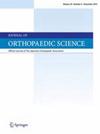Treatment experience with continuous local antibiotic perfusion for periprosthetic joint infection
IF 1.5
4区 医学
Q3 ORTHOPEDICS
引用次数: 0
Abstract
Background
Antibiotic concentrations 100–1000 times higher than the minimum inhibitory concentration are necessary for eradicating biofilms in periprosthetic joint infections (PJI). Achieving this with intravenous antibiotics is challenging, but continuous local antibiotic perfusion (CLAP) can increase the local concentration of antibiotics. Although there are several reports on CLAP therapy in the fracture-related infection, there are only few reports on its application in PJI. Here, we report our experience with CLAP therapy for PJI.
Methods
Eight patients with PJI (two males and six females, with mean age of 73.5 years [±11.6]) were treated at our department, and their clinical characteristics were analyzed. The parameters considered were the classification of PJI, surgical procedure, duration of CLAP, duration of transvenous antibiotic administration, time of CRP-negative status, whether the infection resolved or recurred, and whether there were complications due to CLAP.
Results
Initial surgery included total knee arthroplasty in five cases, unicompartmental knee arthroplasty in one case, and total hip arthroplasty in two cases. There were four cases of early postoperative infection, two of acute delayed infection, and two of chronic delayed infection. The surgical procedures performed were two-stage revision for two patients, and debridement, antibiotics, and implant retention (DAIR) for the other six. The mean durations of CLAP and transvenous antibiotic administration were 8.5 (±2.4) and 22.4 days (±13.7), respectively, and the mean time to CRP-negative status was 23.3 days (±10.7). All eight patients successfully resolved without additional irrigation or debridement, and no recurrence was observed at the last follow-up after discontinuation of oral antibiotics. No systemic side effects of gentamicin or other complications associated with CLAP were observed.
Conclusion
All patients achieved infection resolution with the combined use of CLAP. This suggests that CLAP is a useful treatment option for PJI.
持续局部抗生素灌注治疗假体周围关节感染的经验
背景要根除假体周围关节感染(PJI)中的生物膜,抗生素浓度必须比最低抑制浓度高 100-1000 倍。静脉注射抗生素很难实现这一目标,但持续局部抗生素灌注(CLAP)可以提高局部抗生素浓度。虽然有多篇关于 CLAP 治疗骨折相关感染的报道,但将其应用于 PJI 的报道却寥寥无几。我们在此报告 CLAP 治疗 PJI 的经验。方法我们科室收治了八例 PJI 患者(两男六女,平均年龄 73.5 岁 [±11.6]),并分析了他们的临床特征。考虑的参数包括 PJI 的分类、手术方法、CLAP 的持续时间、经静脉应用抗生素的持续时间、CRP 阴性状态的时间、感染是否缓解或复发以及 CLAP 是否导致并发症。术后早期感染 4 例,急性延迟感染 2 例,慢性延迟感染 2 例。两名患者接受了两阶段翻修手术,另外六名患者接受了清创、抗生素和植入物保留(DAIR)手术。CLAP 和经静脉使用抗生素的平均持续时间分别为 8.5 天(±2.4)和 22.4 天(±13.7),CRP 阴性的平均时间为 23.3 天(±10.7)。所有八名患者的病情均已成功缓解,无需进行额外的冲洗或清创,在停用口服抗生素后的最后一次随访中也未发现复发。没有观察到庆大霉素的全身副作用或与 CLAP 相关的其他并发症。这表明 CLAP 是治疗 PJI 的有效方法。
本文章由计算机程序翻译,如有差异,请以英文原文为准。
求助全文
约1分钟内获得全文
求助全文
来源期刊

Journal of Orthopaedic Science
医学-整形外科
CiteScore
3.00
自引率
0.00%
发文量
290
审稿时长
90 days
期刊介绍:
The Journal of Orthopaedic Science is the official peer-reviewed journal of the Japanese Orthopaedic Association. The journal publishes the latest researches and topical debates in all fields of clinical and experimental orthopaedics, including musculoskeletal medicine, sports medicine, locomotive syndrome, trauma, paediatrics, oncology and biomaterials, as well as basic researches.
 求助内容:
求助内容: 应助结果提醒方式:
应助结果提醒方式:


